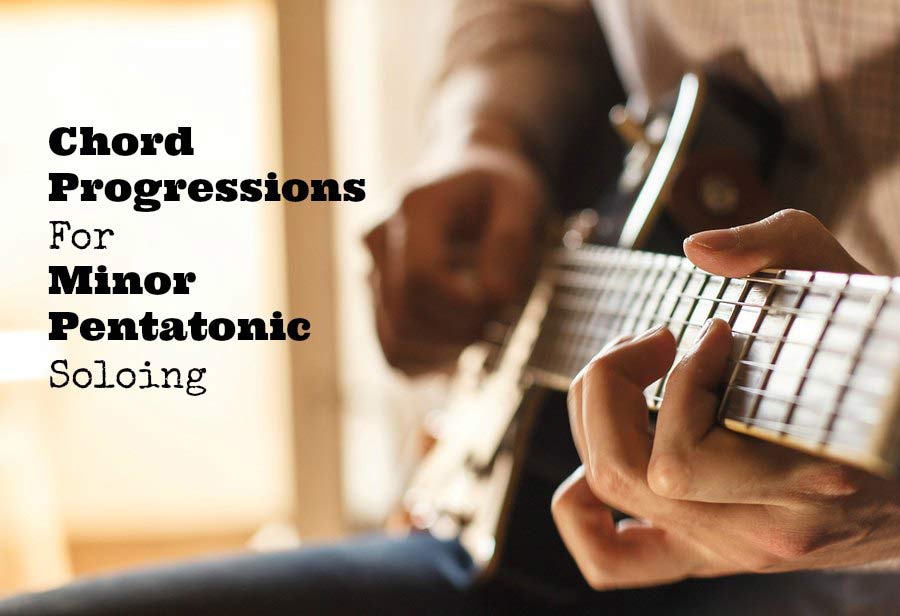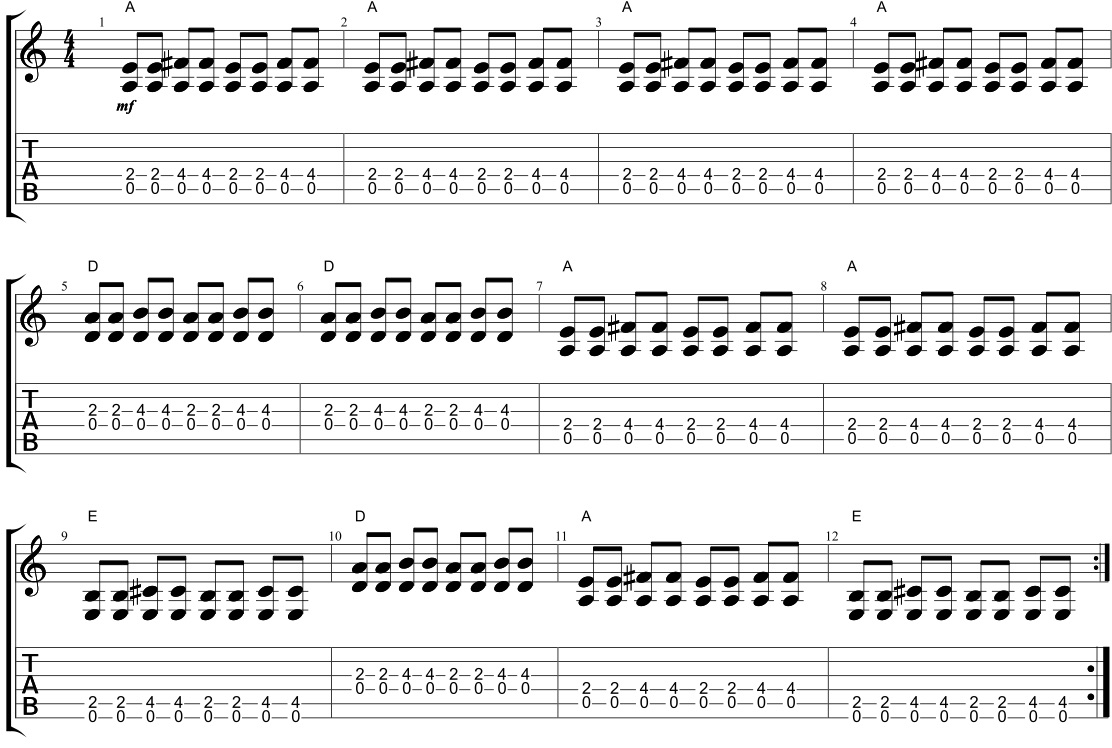May 12, 2019 by Klaus Crow

Once you know how to play the minor pentatonic / blues scale and how to use it for soloing purposes, you want to know over what chord progressions you can play the scale. There are a few ways to go about this.
Let’s dive in!
MINOR KEY CHORD PROGRESSION
Like the natural minor scale, you can also use the minor pentatonic scale to solo over a song or chord progression in a minor key. We will use the chords derived from the natural minor scale to build your minor key chord progression.
Here’s the formula to find the chords to your progression:
I=minor, ii=dim, III=major, iv=minor, v=minor, VI=major, VII=major
For instance, if you want to use an A minor pentatonic scale to solo over a song or chord progression in the key of A minor you start with filling in the notes of the A natural minor scale to the formula.
For example:
A natural minor scale (A Aeolian mode) = A B C D E F G
Formula for finding the chords = minor – dim – major – minor – minor – major – major
Chords for the progression: Am – Bdim – C – Dm – Em – F – G
If you want to use an E minor pentatonic scale to solo over an Em chord progression start apply the notes of the E natural minor scale to the formula.
Example:
E natural minor scale (E Aeolian mode) = E F# G A B C D
Formula for finding the chords = minor – dim – major – minor – minor – major – major
Chords for the progression: Em – F#dim – G – Am – Bm – C – D
Now we have the chords we can create our own chord progressions. You can choose and change the order of the chords in anyway you like. Here are some common minor key chord progressions:
i – VII – VI – VII chord progression
In the key of A that is = Am – G – F – G
In the key of E that is = Em – D – C – D
i – iv – v – i chord progression
In the key of A that is = Am Dm Em Am
In the key of E that is = Em Am Bm Em
Note: You can use the A minor pentatonic scale to solo over any of the chords of the chord progression. You don’t need to switch scales or anything when you’re changing chords as long as you are using the chords of your progression.
For more chord progressions check out chords and progressions built of the natural minor scale.
BLUES PROGRESSIONS
The minor pentatonic scale can also be used over major chords like in a blues chord progression. The combination of notes from the minor pentatonic scale over the major chords is part of that bluesy sound.
The I – IV – V progression uses the three major chords derived from the major scale. That means in the key of A you get: A – D – E
In the blues we often use dom7 chords because of their natural bluesy sound.
So your typical blues chords will be: I7 – IV7 – V7
In the key of A that means: A7 – D7 – E7
We apply these chords to a 12 bar blues. The 12 bar blues is the most prominent blues chord progression and perfect to use for your minor pentatonic soloing:
/ A7 / A7 / A7 / A7 /
/ D7 / D7 / A7 / A7 /
/ E7 / D7 / A7 / E7 /
If you want to spice up your blues progressions check out the the 3 Juicy Blues Chord Progressions to Be Prepared
Another way to lay the ground work for pentatonic / blues soloing is the 12 bar blues shuffle. It’s the most common approach to blues rhythm playing and uses the same 12 bar blues progression.
Basic 12 Bar Blues Shuffle
The shuffle is an eighth note rhythmic feel based on triplets. You count 1-trip-let, 2-trip-let, 3-trip-let, 4-trip-let. Only in a shuffle rhythm the middle note of the triplet is not played.
You count the middle note (-trip-), but you don’t play it. So if you look at the tabs you play 2-trip-2, 4-trip-4, 2-trip-2, 4-trip-4. Use your first finger (index finger) for the 2nd fret and your 3rd finger (ring finger) for the 4th fret.
Tip: If you are looking for some really brilliant sounding blues jam tracks for your pentatonic soloing, check out the Briggs/Marangoni Blues Backing Tracks
Have a wonderful weekend!

Looks good to me can’t wait to try
Hi Robert,
It’s good alright ;)
What a great feeling it is to solo over a nice chord progression and totally get into it.
Best,
Klaus